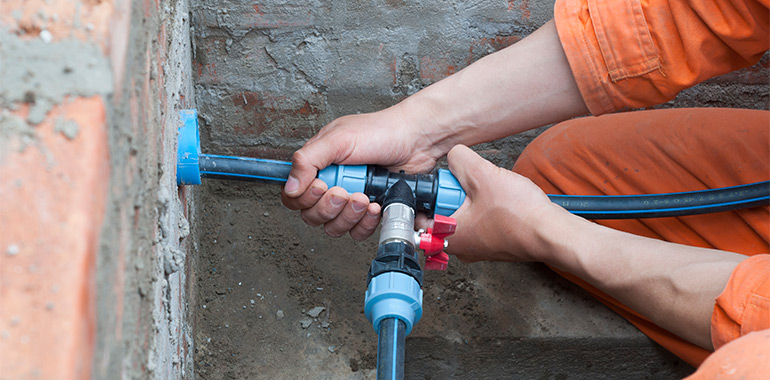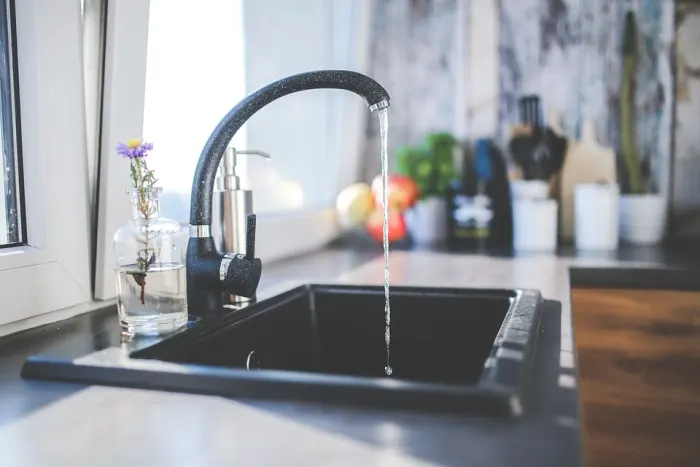We have unearthed the article on Why is My Home Making Strange Plumbing Noises down the page on the internet and decided it made good sense to discuss it with you on this site.

To identify noisy plumbing, it is very important to identify very first whether the undesirable noises occur on the system's inlet side-in various other words, when water is turned on-or on the drainpipe side. Noises on the inlet side have differed causes: too much water pressure, worn shutoff and tap parts, poorly linked pumps or other devices, incorrectly positioned pipe fasteners, and also plumbing runs having a lot of limited bends or other restrictions. Sounds on the drain side normally originate from bad area or, just like some inlet side sound, a design consisting of tight bends.
Hissing
Hissing sound that happens when a tap is opened somewhat generally signals extreme water pressure. Consult your neighborhood public utility if you presume this problem; it will certainly be able to inform you the water pressure in your location as well as can install a pressurereducing shutoff on the incoming water pipe if essential.
Thudding
Thudding noise, often accompanied by trembling pipelines, when a faucet or device valve is switched off is a problem called water hammer. The noise and also vibration are brought on by the reverberating wave of pressure in the water, which instantly has no place to go. Often opening up a valve that releases water promptly into a section of piping consisting of a restriction, elbow joint, or tee installation can generate the same condition.
Water hammer can generally be cured by installing installations called air chambers or shock absorbers in the plumbing to which the trouble valves or faucets are linked. These tools allow the shock wave produced by the halted circulation of water to dissipate airborne they contain, which (unlike water) is compressible.
Older plumbing systems may have short upright areas of capped pipeline behind walls on faucet runs for the exact same function; these can eventually full of water, lowering or destroying their performance. The cure is to drain the water system entirely by shutting down the main water system shutoff and opening all taps. After that open up the main supply valve as well as shut the faucets one at a time, beginning with the tap nearest the valve as well as finishing with the one farthest away.
Babbling or Screeching
Extreme chattering or shrilling that occurs when a shutoff or faucet is turned on, and that normally goes away when the installation is opened totally, signals loosened or malfunctioning inner components. The option is to change the shutoff or tap with a brand-new one.
Pumps as well as home appliances such as cleaning makers as well as dishwashing machines can move motor noise to pipelines if they are poorly attached. Connect such things to plumbing with plastic or rubber hoses-never inflexible pipe-to isolate them.
Various Other Inlet Side Noises
Creaking, squeaking, scratching, snapping, and tapping generally are brought on by the development or tightening of pipelines, typically copper ones supplying hot water. The audios take place as the pipelines slide versus loose fasteners or strike nearby residence framework. You can commonly identify the place of the problem if the pipes are revealed; simply comply with the noise when the pipes are making sounds. More than likely you will certainly find a loose pipeline wall mount or an area where pipes exist so close to floor joists or various other framing items that they clatter versus them. Attaching foam pipe insulation around the pipelines at the point of get in touch with ought to remedy the trouble. Make sure straps and wall mounts are protected and give appropriate support. Where possible, pipeline fasteners must be affixed to large structural elements such as foundation wall surfaces rather than to framing; doing so decreases the transmission of vibrations from plumbing to surfaces that can intensify as well as move them. If attaching bolts to framing is unavoidable, cover pipes with insulation or various other durable product where they call bolts, and sandwich completions of new bolts in between rubber washers when mounting them.
Dealing with plumbing runs that struggle with flow-restricting tight or countless bends is a last option that needs to be undertaken just after consulting a competent plumbing contractor. Sadly, this scenario is fairly typical in older residences that may not have been developed with interior plumbing or that have actually seen several remodels, particularly by amateurs.
Drain Sound
On the drain side of plumbing, the chief goals are to get rid of surface areas that can be struck by dropping or rushing water as well as to protect pipelines to contain unavoidable noises.
In brand-new construction, bathtubs, shower stalls, bathrooms, as well as wallmounted sinks and also basins ought to be set on or against resilient underlayments to minimize the transmission of audio with them. Water-saving commodes and also faucets are less loud than standard models; install them as opposed to older types even if codes in your area still permit utilizing older components.
Drains that do not run up and down to the cellar or that branch into horizontal pipe runs supported at floor joists or other mounting present especially bothersome sound troubles. Such pipelines are huge enough to emit substantial resonance; they additionally lug substantial quantities of water, which makes the situation worse. In new construction, specify cast-iron soil pipes (the large pipes that drain toilets) if you can afford them. Their massiveness consists of a lot of the sound made by water passing through them. Also, avoid routing drains in wall surfaces shown bed rooms as well as spaces where people gather. Walls containing drainpipes should be soundproofed as was defined previously, making use of dual panels of sound-insulating fiber board as well as wallboard. Pipes themselves can be wrapped with special fiberglass insulation produced the function; such pipes have an impervious vinyl skin (occasionally having lead). Outcomes are not always satisfactory.
WHY IS MY PLUMBING MAKING SO MUCH NOISE?
This noise indeed sounds like someone is banging a hammer against your pipes! It happens when a faucet is opened, allowed to run for a bit, then quickly shut — causing the rushing water to slam against the shut-off valve.
To remedy this, you’ll need to check and refill your air chamber. Air chambers are filled with — you guessed it — air and help absorb the shock of moving water (that comes to a sudden stop). Over time, these chambers can fill with water, making them less effective.
You’ll want to turn off your home’s water supply, then open ALL faucets (from the bathroom sink to outdoor hose bib) to drain your pipes. Then, turn the water back on and hopefully the noise stops! If you’re still hearing the sound, give us a call to examine further.
Whistles
Whistling sounds can be frustrating, as sometimes the source isn’t easily identified. However, if you can pinpoint which faucet or valve that may be the cause, you’ll likely encounter a worn gasket or washer — an easy fix if you replace the worn parts!Whistling sounds from elsewhere can mean a number of things — from high water pressure to mineral deposits. Your best plan of attack here is to give our plumbing experts a call. We’ll be able to determine where the noise is coming from and what the cause may be, then recommend an effective fix!
Cracks or Ticks
Cracking or ticking typically comes from hot water going through cold, copper pipes. This causes the copper to expand resulting in a cracking or ticking sound. Once the pipes stop expanding, the noise should stop as well.
Pro tip: you may want to lower the temperature of your water heater to see if that helps lessen the sound, or wrapping the pipe in insulation can also help muffle the noise.
Bangs
Bangs typically come from water pressure that’s too high. To test for high water pressure, get a pressure gauge and attach it to your faucet. Water pressure should be no higher than 80 psi (pounds per square inch) and also no lower than 40 psi. If you find a number greater than 80 psi, then you’ve found your problem!
Next step is to give us a call in order to install a pressure regulator. Trust us, you don’t want to wait to resolve this issue. Not only is the sound annoying, but high water pressure can be destructive to your home — including damaging certain appliances, like your washer and dishwasher.
Dripping
You might be accustom to the slow quiet drip your kitchen faucet makes. You might have even tuned out your bathroom sink dripping and drabbing all day long — but it’s time to find its cause.
A slow drip could signify a variety of easy to fix issues, such as a worn out O ring, or loose part. And by ignoring the drip, you could be wasting up to 2,000 gallons of water a year! So start conserving water — get it looked at ASAP.
https://www.pwessig.com/blog/2018/december/why-is-my-plumbing-making-so-much-noise-/

Do you appreciate reading up on Diagnose Unwanted Plumbing Noises? Create feedback directly below. We would be glad to know your views about this blog post. In hopes that you come back again soon. Loved our blog entry? Please share it. Help somebody else discover it. I praise you for your time. Come back soon.
Visit Site